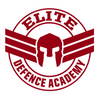
Many people who look in at our system of Krav Maga are quite curious about one particular thing: they often ask me about the fact that it doesn’t “look” like the stereotypical Krav Maga you find on YouTube.  There’s something about the way we do Krav Maga that’s different, they say; something that makes it look more flowing, more connected.
There’s something about the way we do Krav Maga that’s different, they say; something that makes it look more flowing, more connected.
Softer, in a way. It’s not the typical, militaristic, “hit the other guy with more force than he has” kind of approach.
It’s not “traditional” Krav Maga. It's not the usual "kickboxing and Krav" combinations you so often see, with rigid, linear punches and kicks, hard blocks, and a display of external muscular power.
And there’s a very sound reason for that. It has to do with the fact that our system is specifically designed to enable a smaller defender to realistically defend against a larger one. It’s designed so that technique and leverage give you a fighting chance against someone who is enormously stronger than you are, so that you can learn ways of exploiting timing and rhythm to overcome an opponent’s speed.
It also makes use of a set of well-defined invisible principles that amplify the power and speed of our system of Krav Maga.
It's a little more deceptive and subtle, and in a nutshell, it echoes the classic ideal of “using an opponent’s strength against him”.
In the Elite Defence Academy International system of Krav Maga, instead of resisting an attacker’s force, we do our best to redirect it and harness it. And in order to do that, an adaptable, pliable mindset is required. A mindset that seeks to blend with an opponent, to undermine his ability, and – when the moment is right – to generate surprising force in our responses and counterattacks.
We’re also realistic enough to unhesitatingly acknowledge that this approach doesn’t work 100% of the time. There are circumstances where we may instantly “jump the track” and adopt another approach to seize a tactical advantage.
But most of the time, the “soft”, flexible approach is what forms the foundation of what we do: an overriding philosophy that governs our development and informs our techniques.
You can see this in many of our movements, from elliptical parries to deceptive arcing strikes, from hidden spirals in many disarms to subtle shifts in posture that lend enormous power to takedowns and joint manipulations.
We understand that everything around us is in a state of duality – hard as well as soft – and that an extreme in either direction leads to imbalance and collapse. But life, and growth, depend on a state of softness.
Soft, by the way, does not mean weak, or completely yielding. It does not mean limp and passive, or the inability to generate power. Rather, it means the ability to optimize efficiency through relaxation, using flow and circularity to conserve and recycle momentum, and to develop whip-like kinetic energy.

If you train in any martial art or combative system that relies entirely on a “strength versus strength” approach, the bad news is that it will only work for you until you encounter someone stronger or faster.
There has to be a better way, a more efficient way, a more intelligent way. And this is what we pursue in our training and teaching – because we know, without a shadow of a doubt, that it works in reality.
Any Elite Defence Academy International student will tell you that the first thing they are taught in Krav Maga training is to “relax and breathe” – and that these two basics are central to everything we do.
We’d rather be the flexible crack of the whip than the rigid swing of the baseball bat. We’d rather be the lightning-fast fluid strike of a snake than the charge of a rhino.
There’s a deeper train of thought here as well, a deeper insight into the relationship between the way the universe works (powerfully spontaneous and with underlying harmony), and the best ways to accomplish mastery over environments we find ourselves in.
Those environments may be external, such as a conflict situation, criminal attack, or dangerous part of town – or they may be internal, such as an emotional environment of doubt or fear that cripples rational reaction, or an internal state of confusion, pain, or distraction, which prevents us from acting in our own best interests or achieving clarity of thought in order to win or progress.
If you’re studying Krav Maga (or any combative art, for that matter), and all you’re being taught is “how to kick and punch”, in a brutish way, without any hint of something deeper in terms of mindset or governing philosophy, then (with respect), your teacher may be a little one-dimensional, and that will ultimately stunt your growth, unless you choose to think these things through for yourself.
And therein lies the key: think these things through, for yourself.
Your journey is your own.
Take responsibility for your learning: not just in Krav Maga, but in every aspect of your personality and life, because they’re intertwined and are part of the totality that is you.
Be curious. Be willing to explore things that may seem utterly counter-intuitive (for example, striving for a state of inner relaxation when under attack).
You cannot learn when you are rigid, made stiff by immovable beliefs or a state of unyielding ego.
You learn best when you’re in a state of open creativity, which is, of course, a state of relaxed focus.
And there are times when this is really not so easy to achieve. But just because it’s not always easy doesn’t mean it isn’t worth striving after.
Be soft. Be adaptable.
And see what happens.
Want to learn Krav Maga? Consider finding out more about our online Krav Maga Beginner Training Program.
